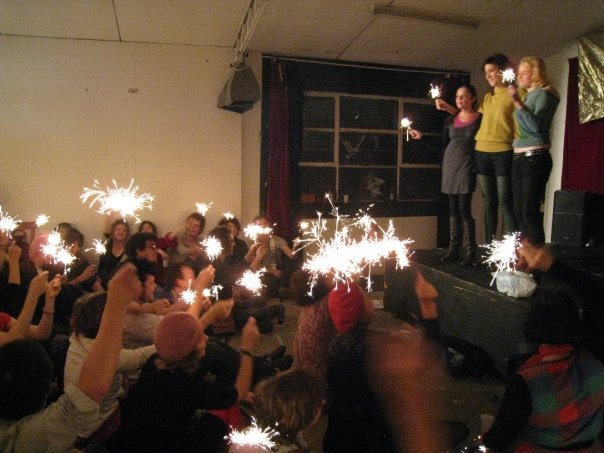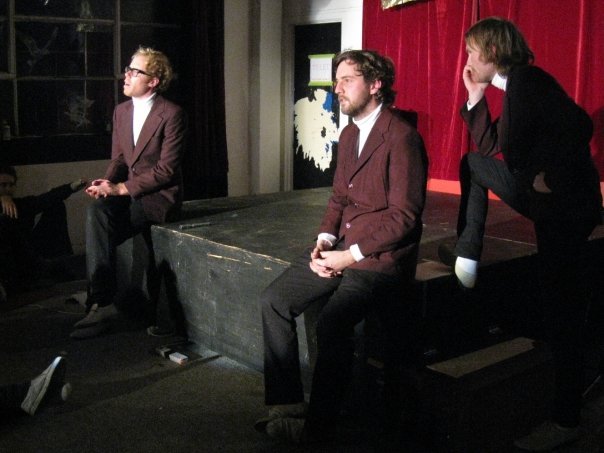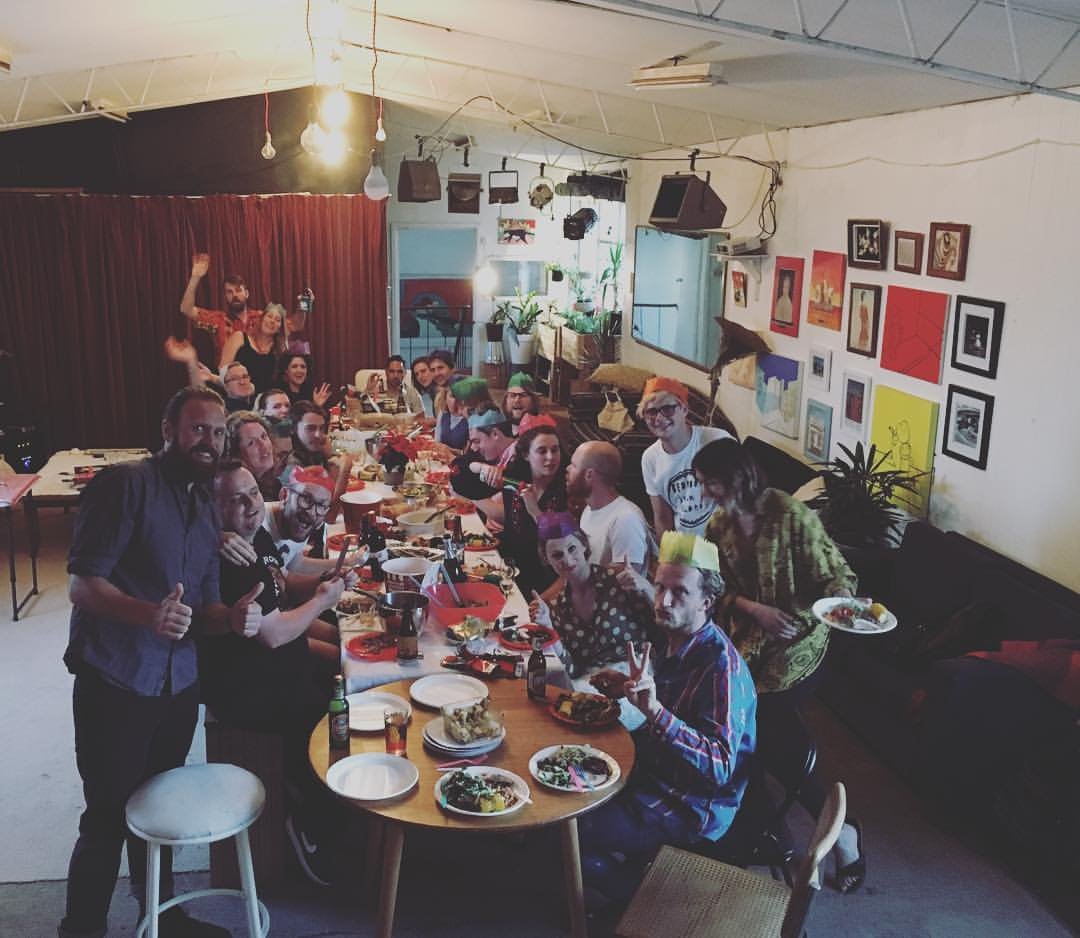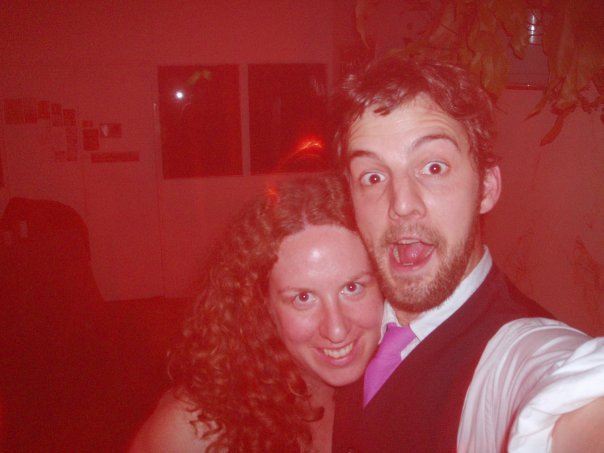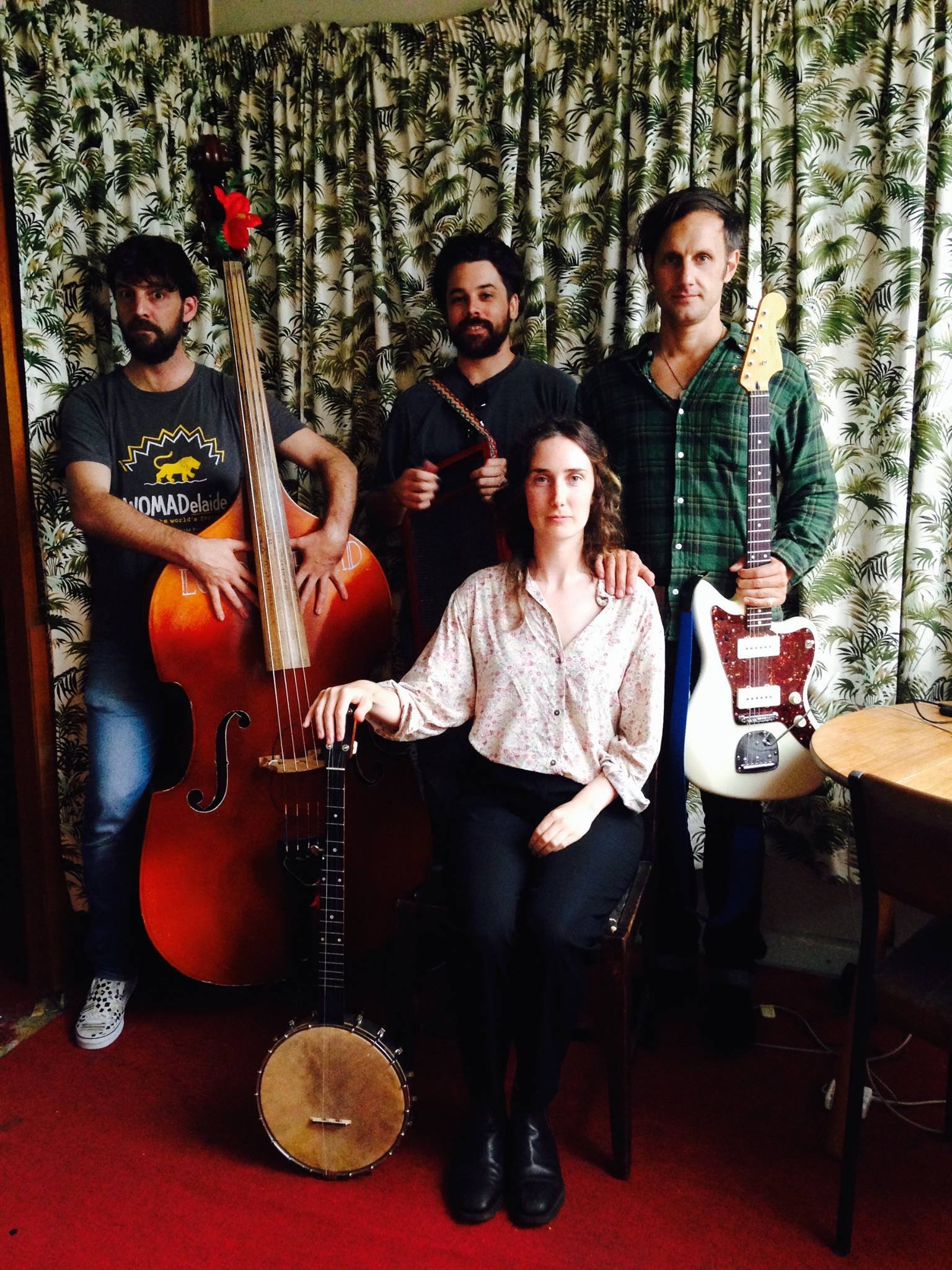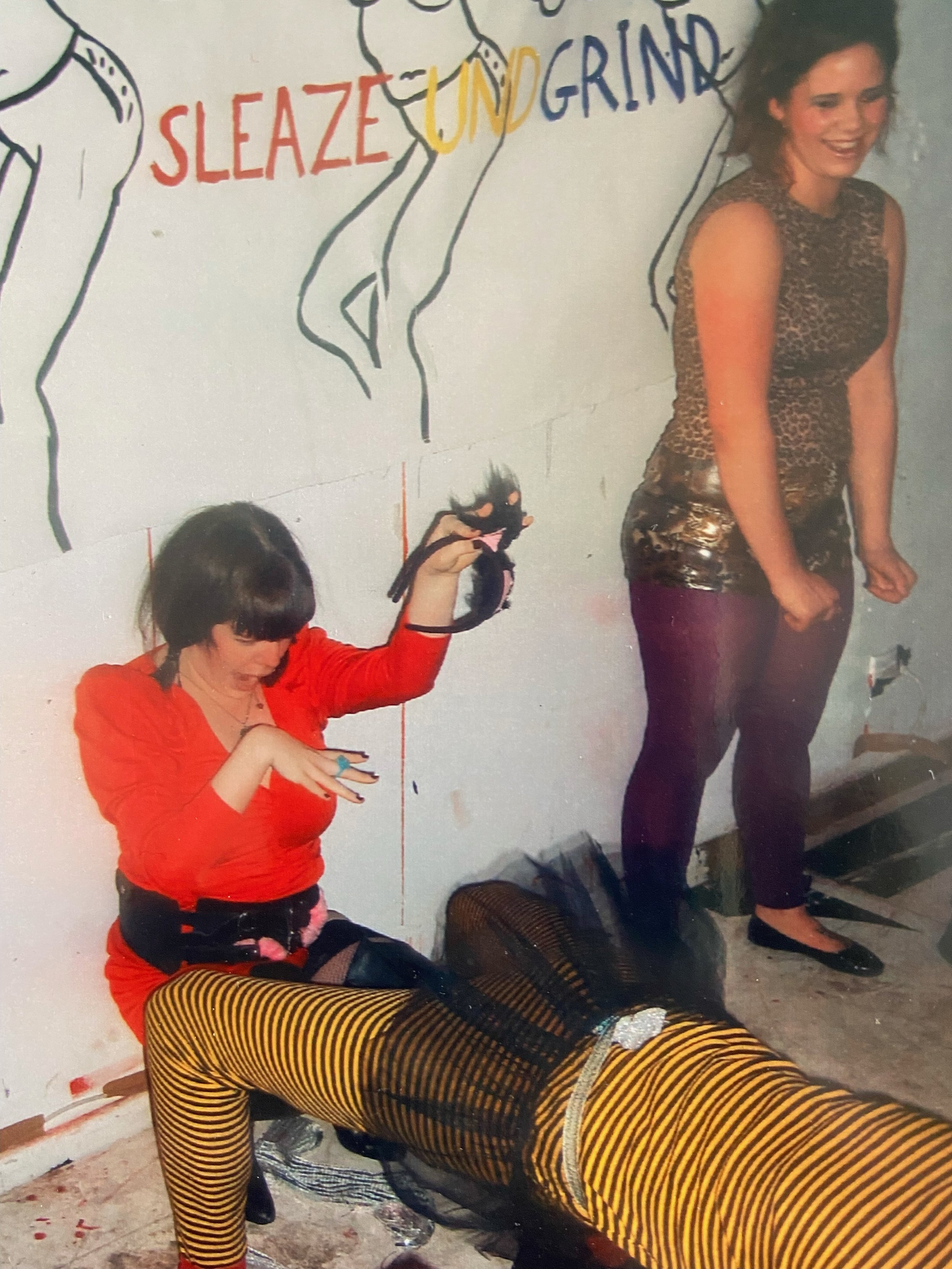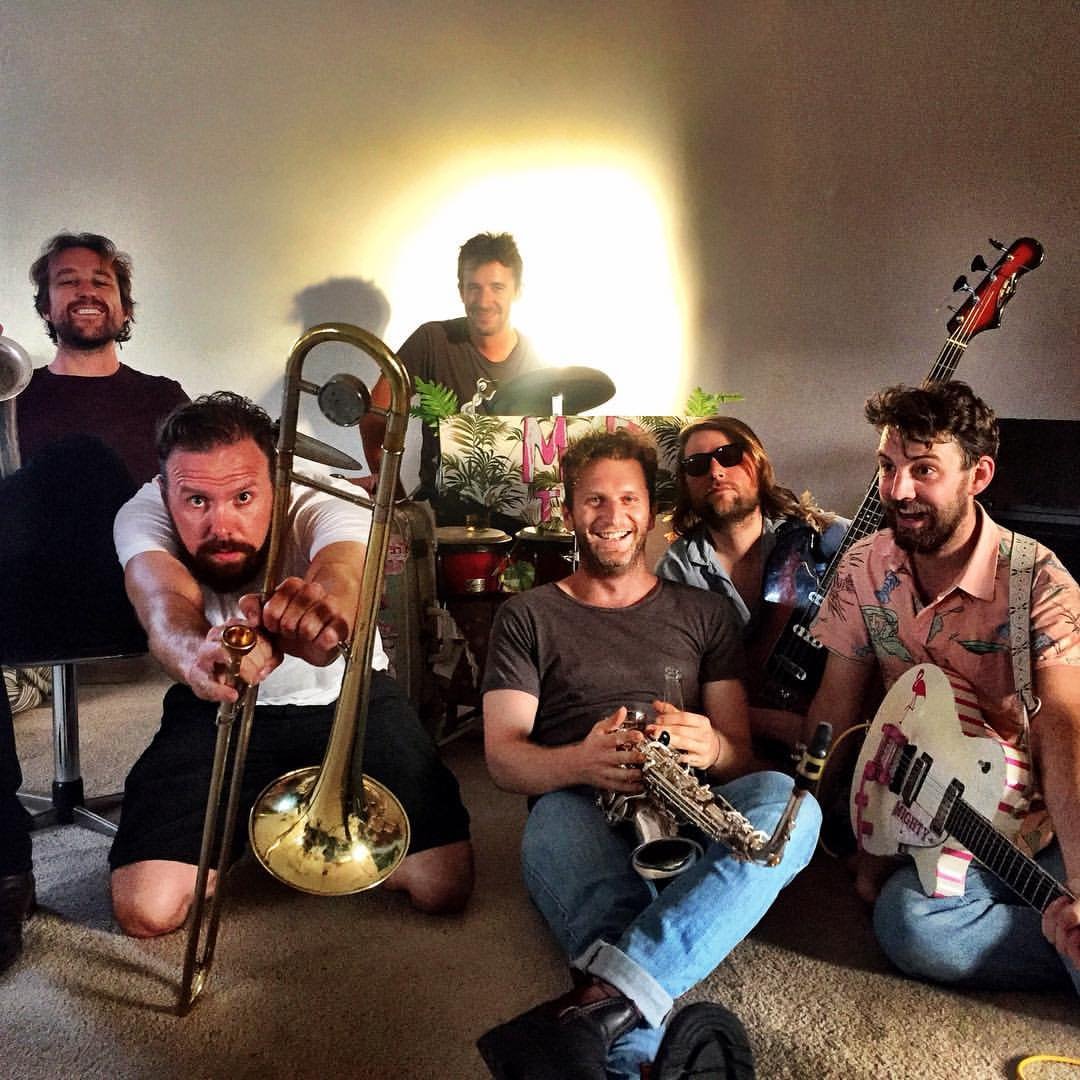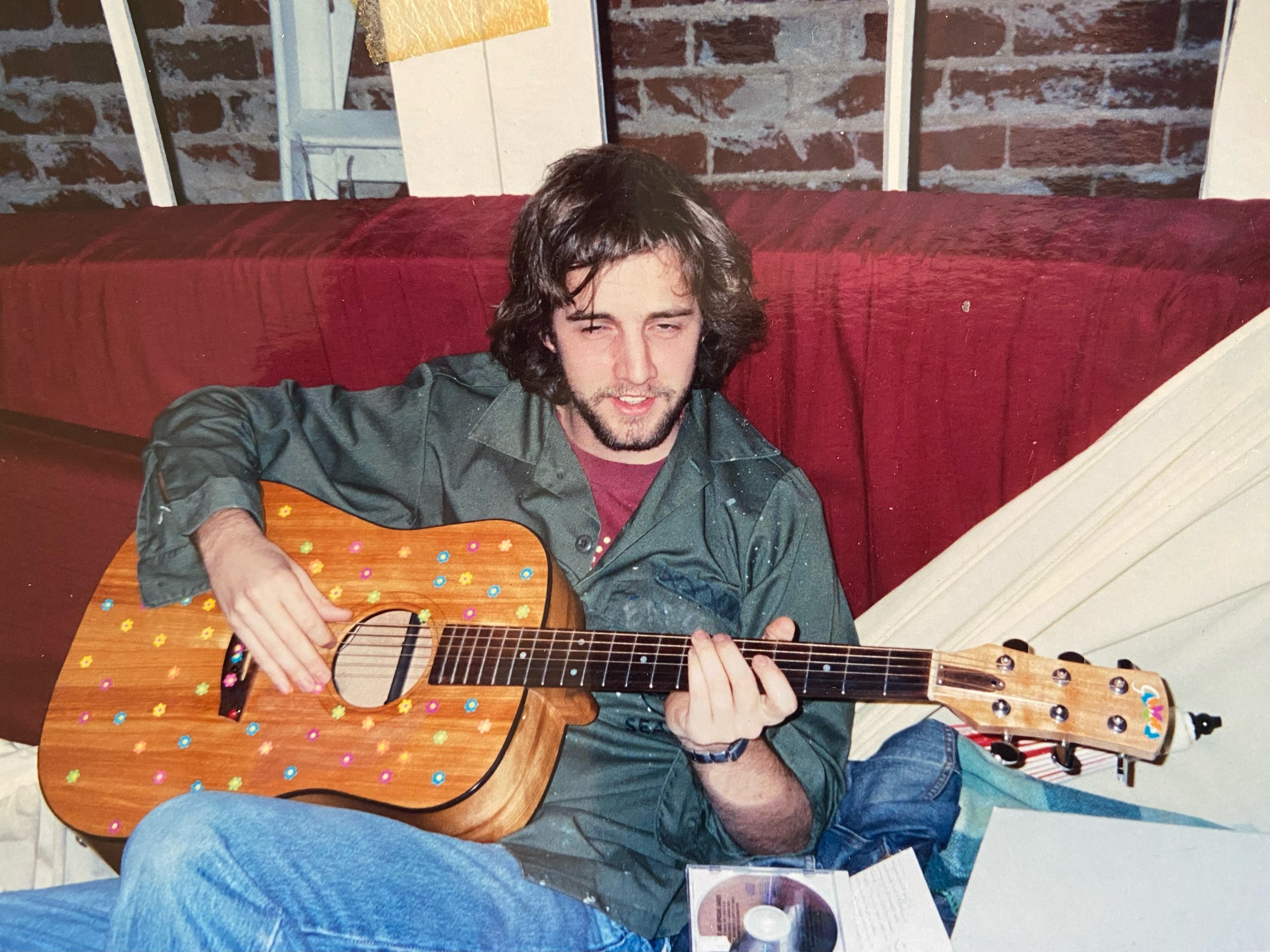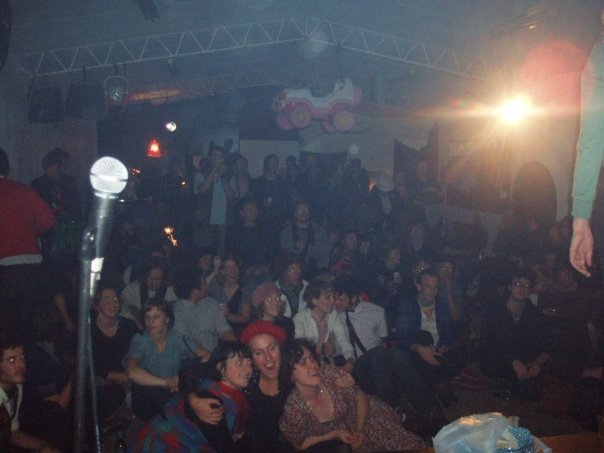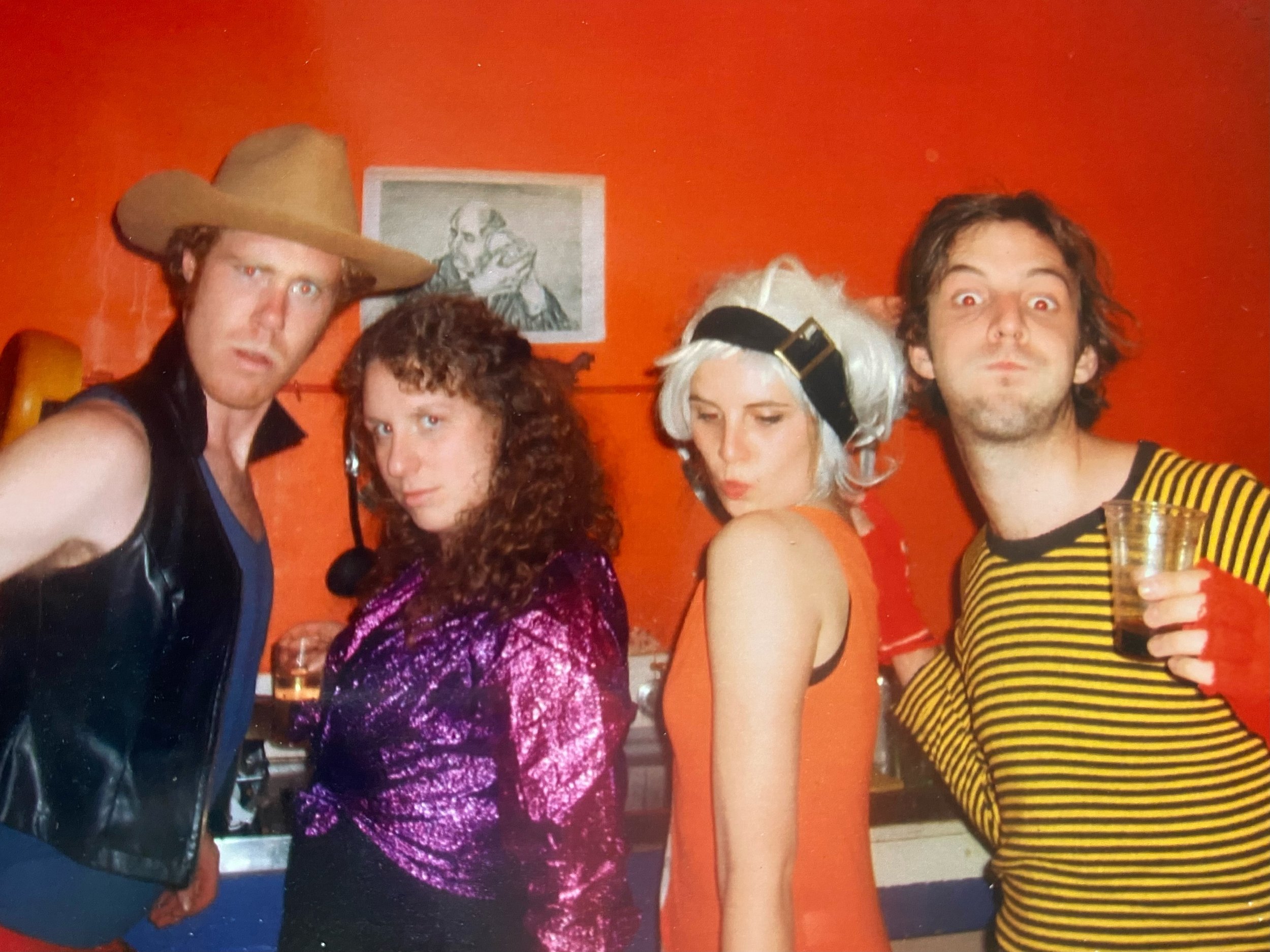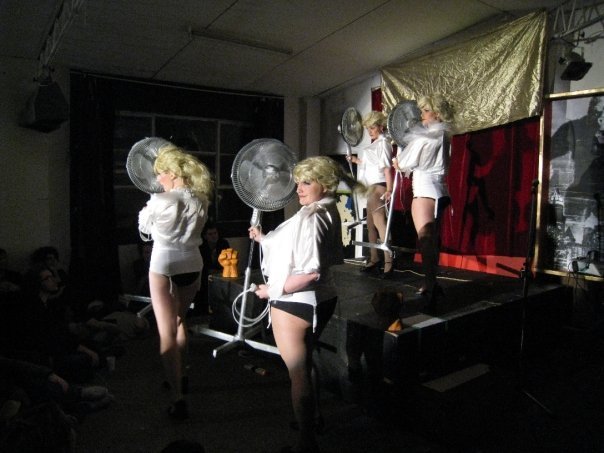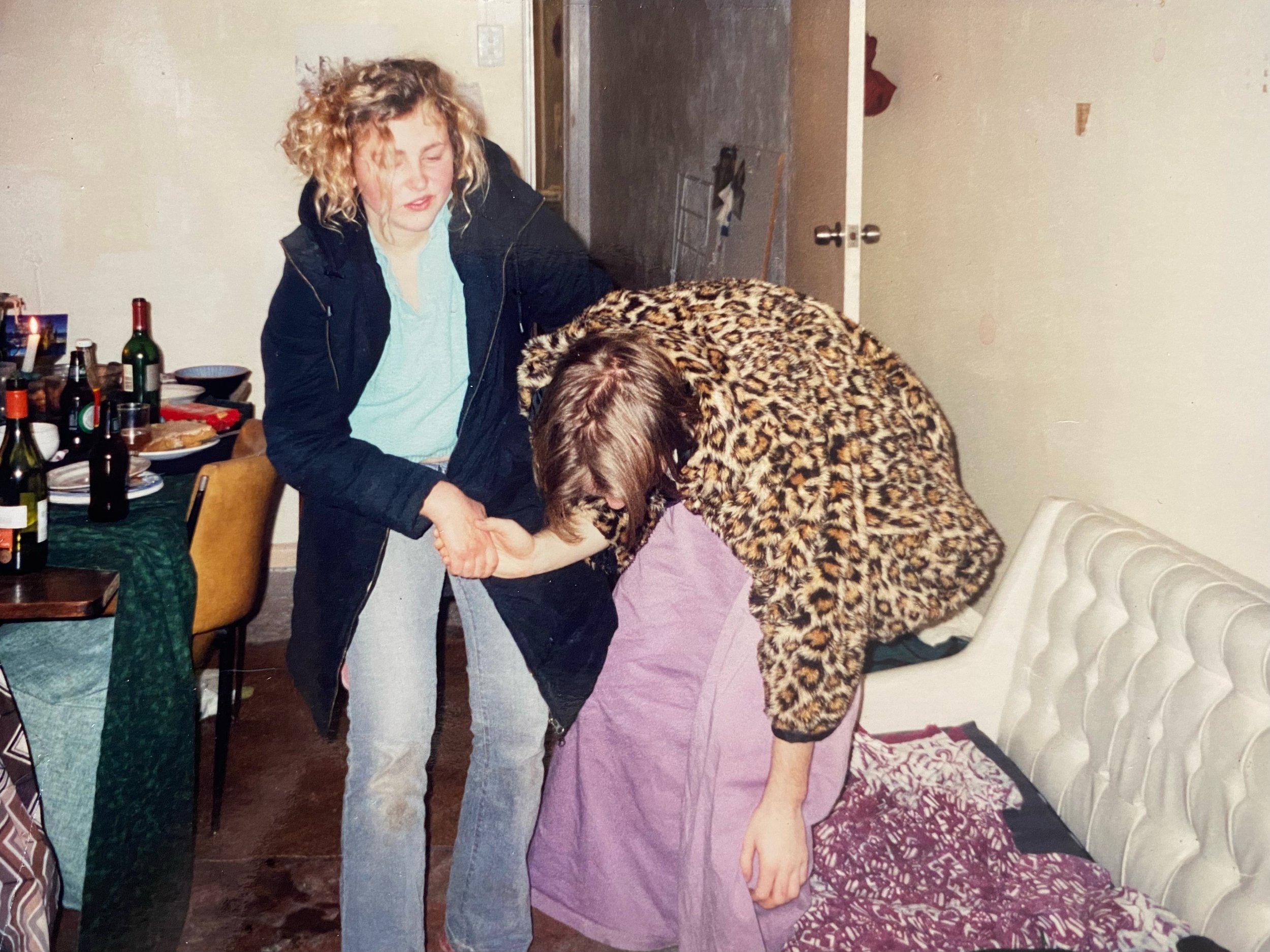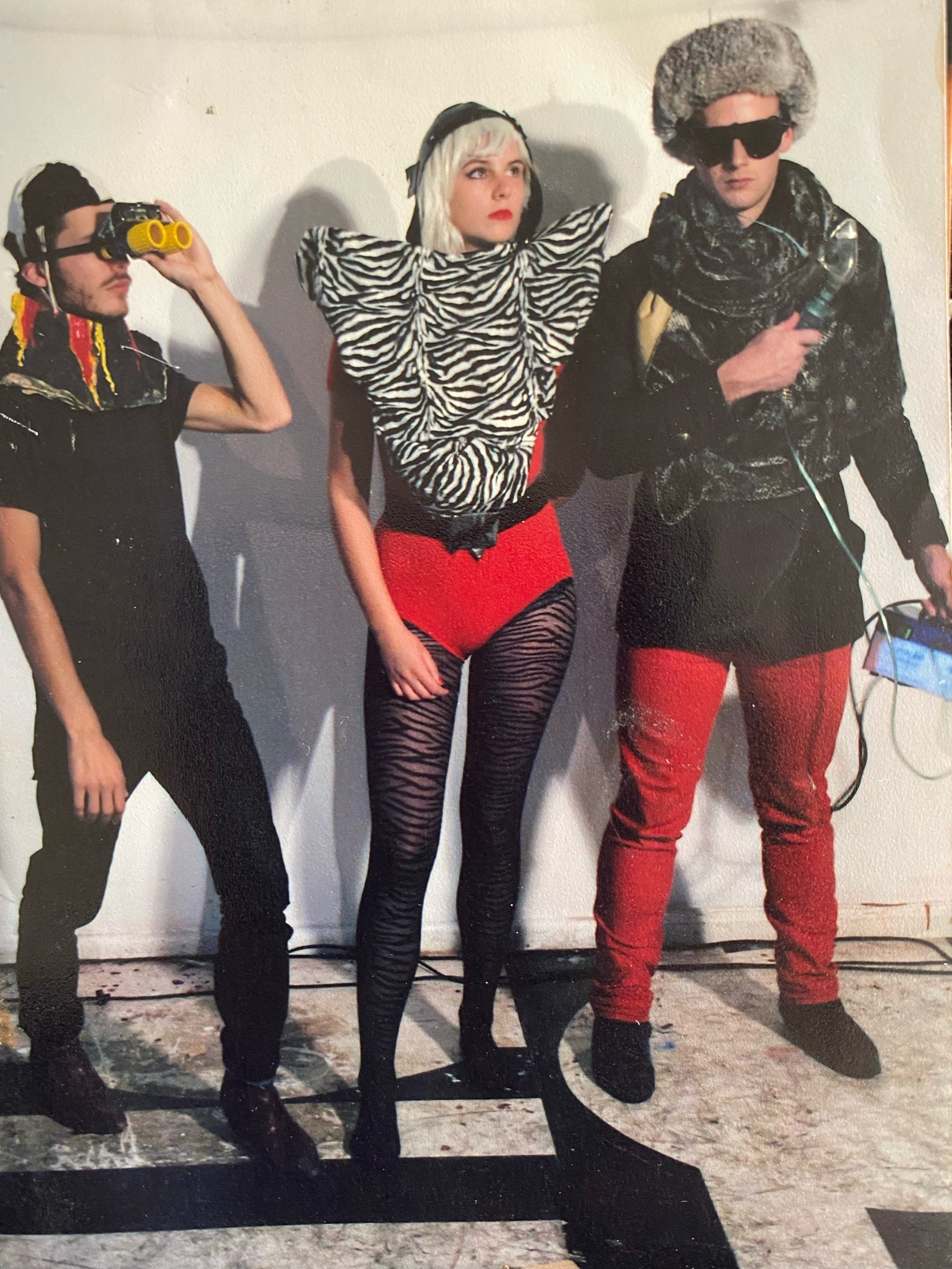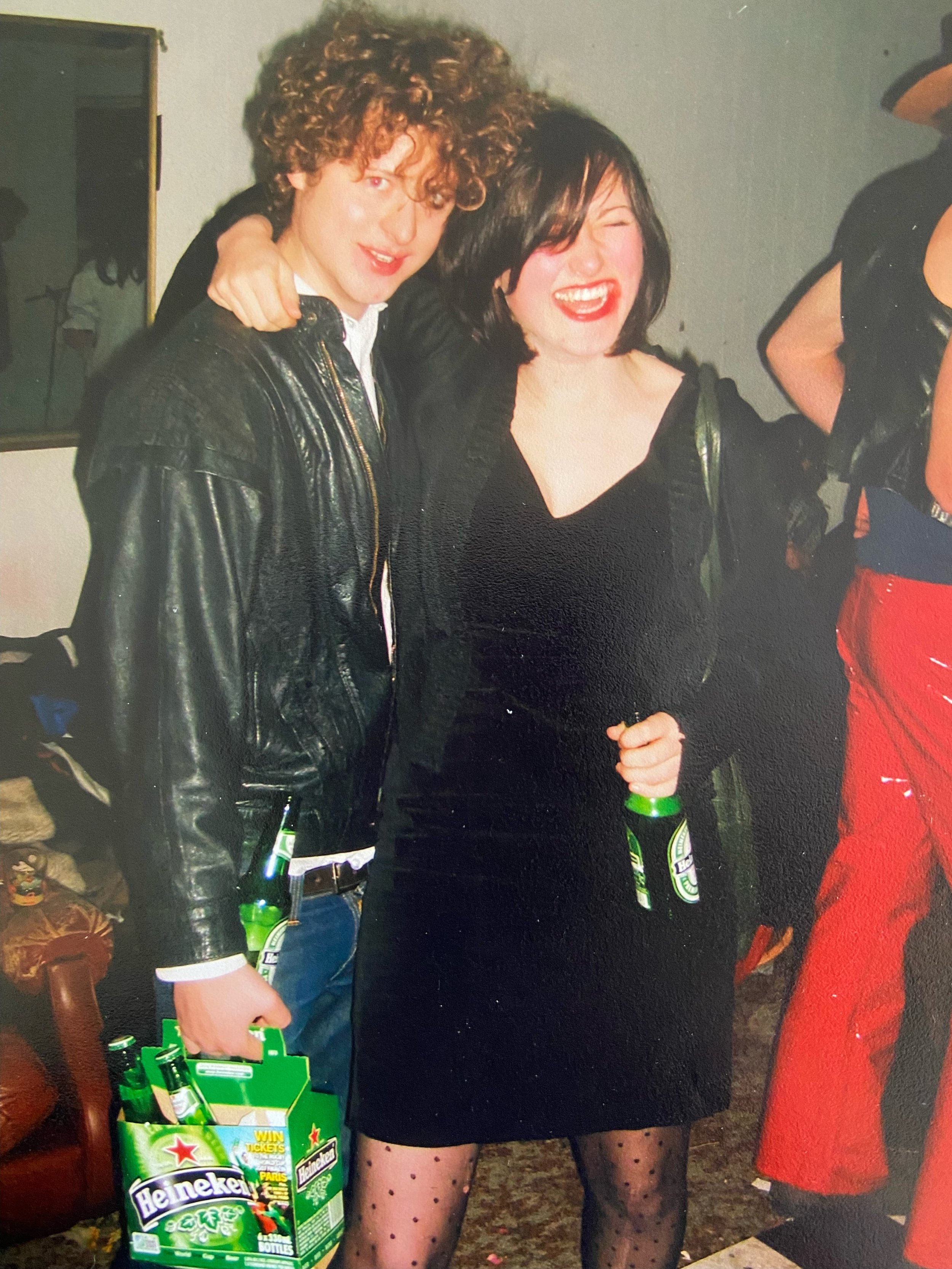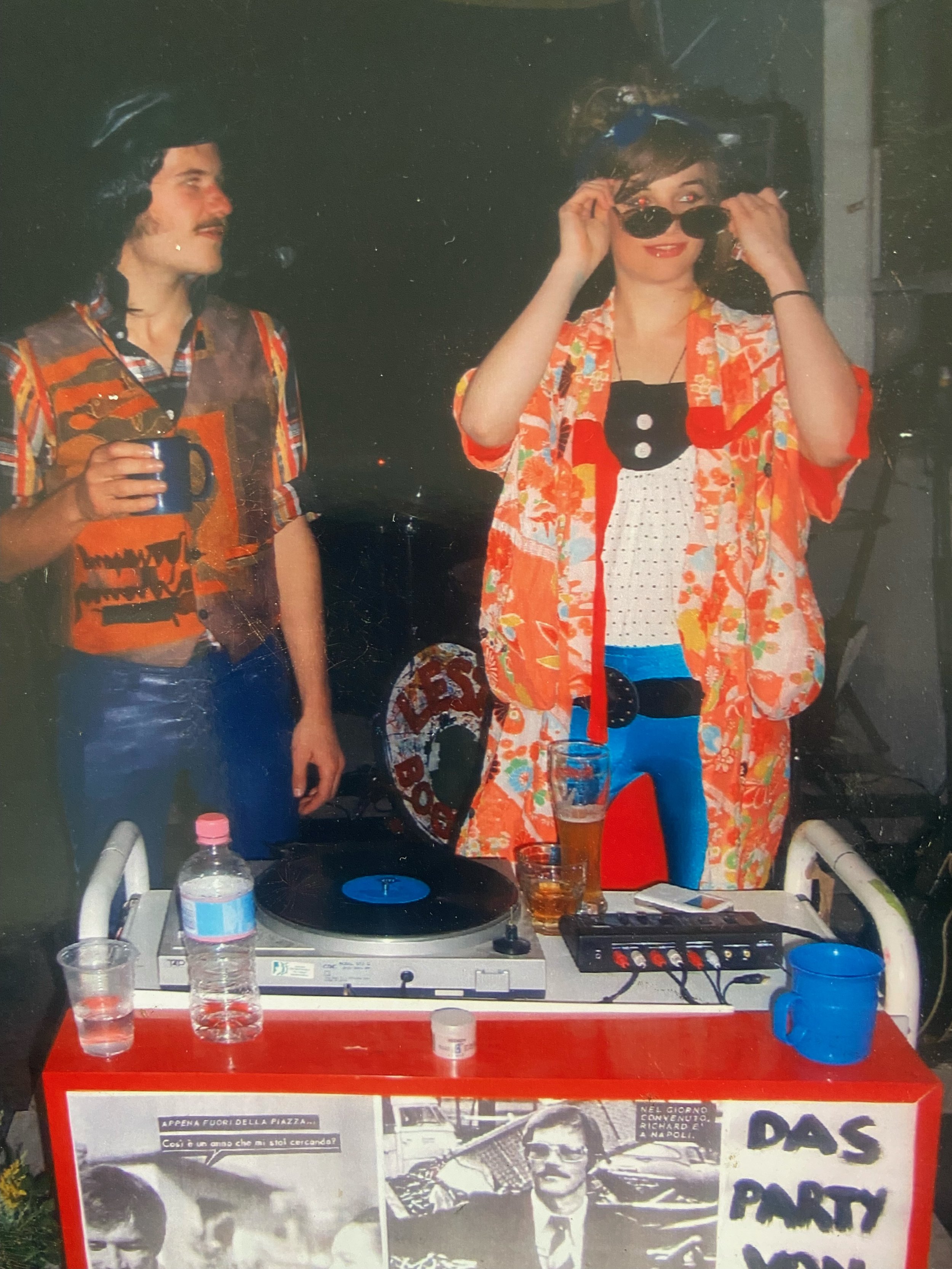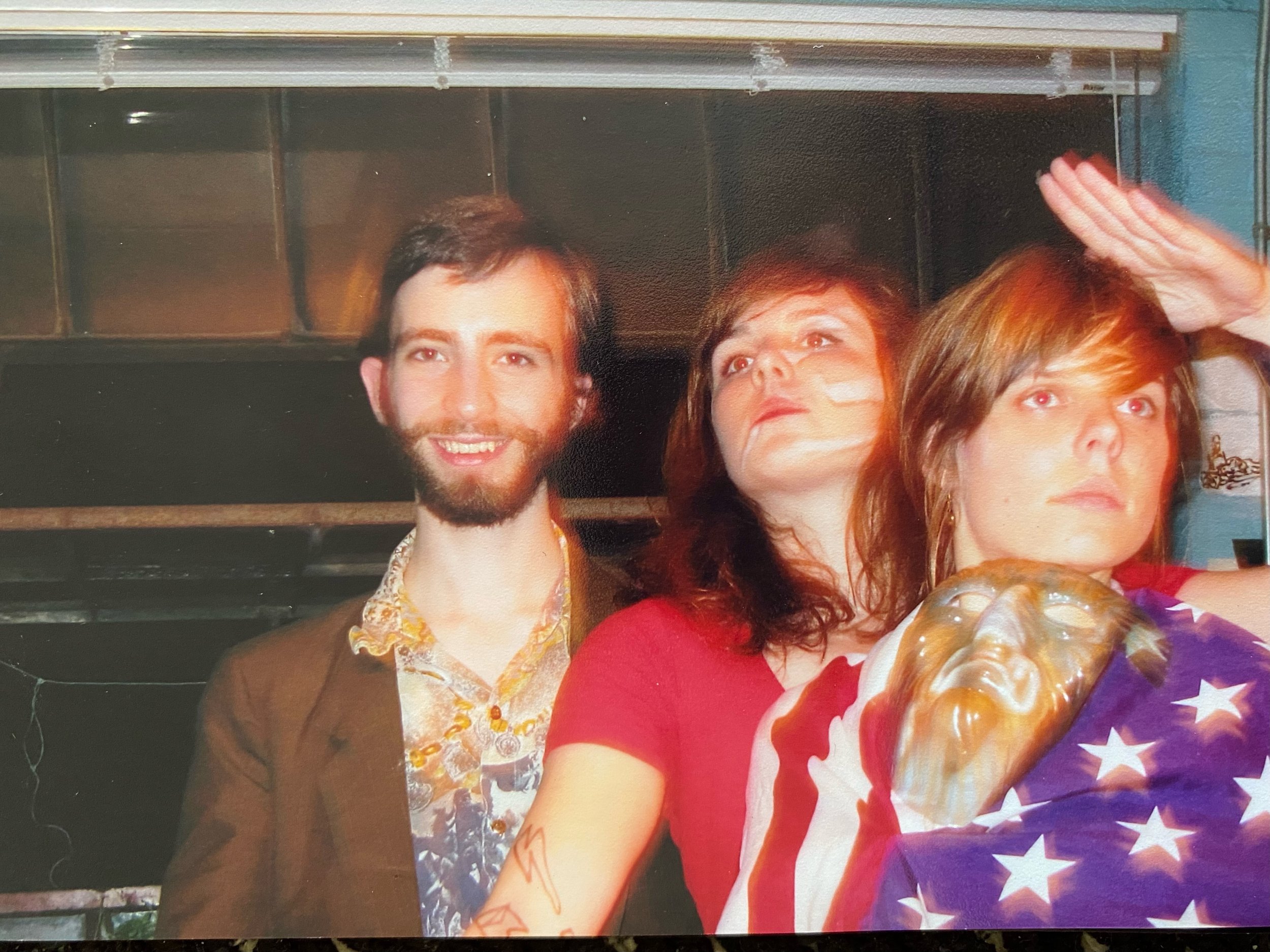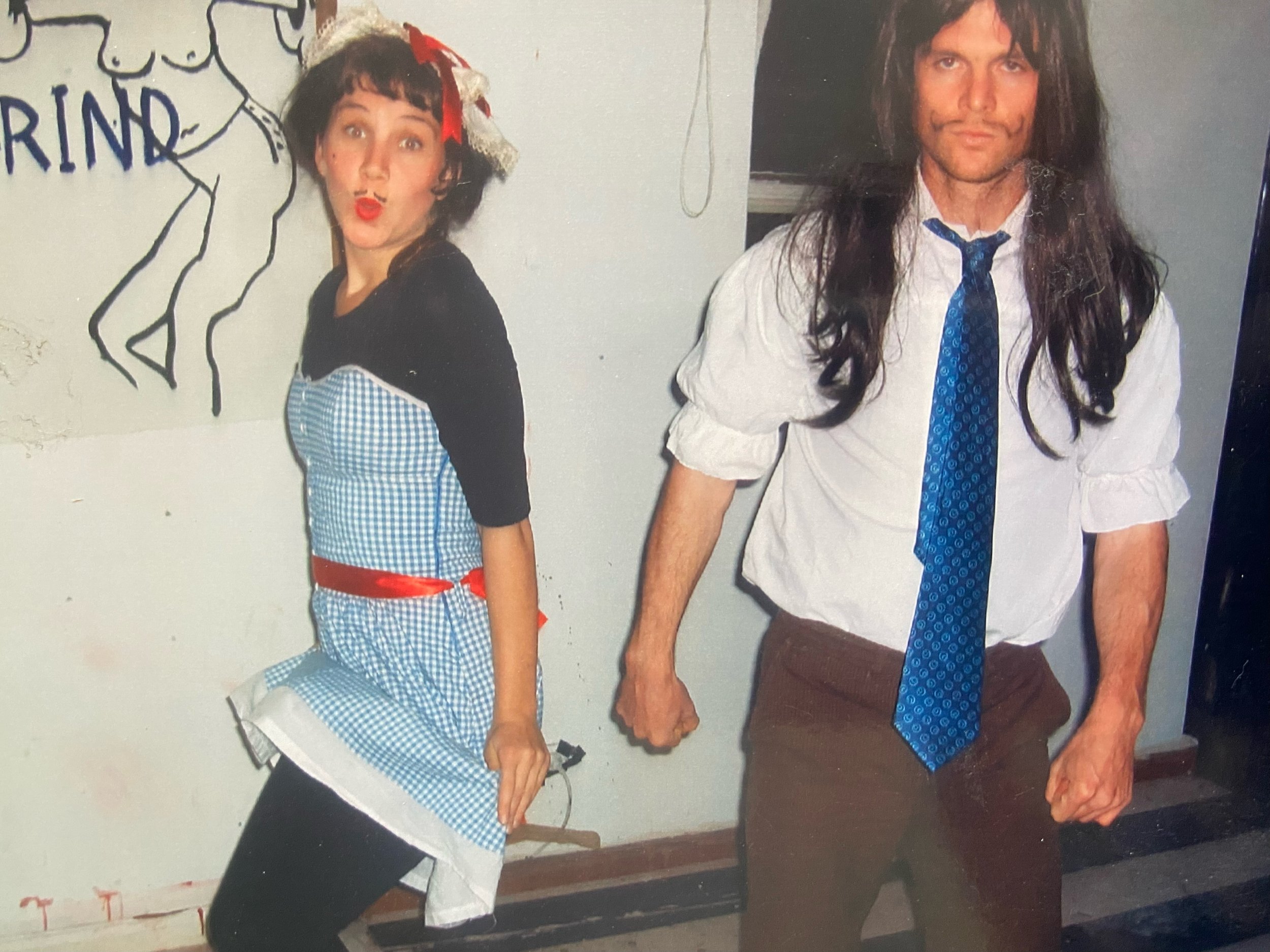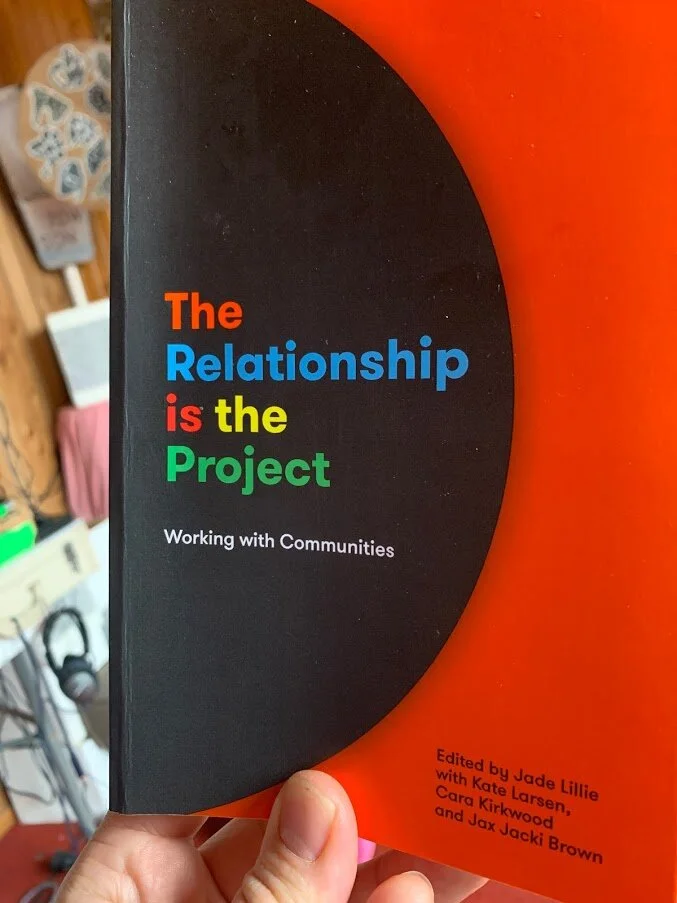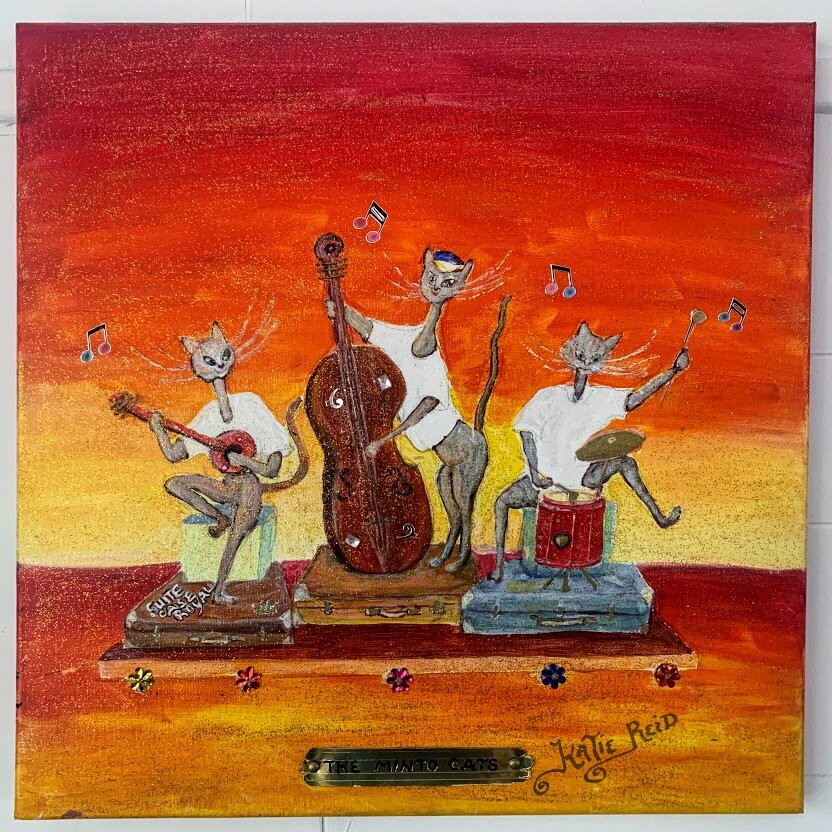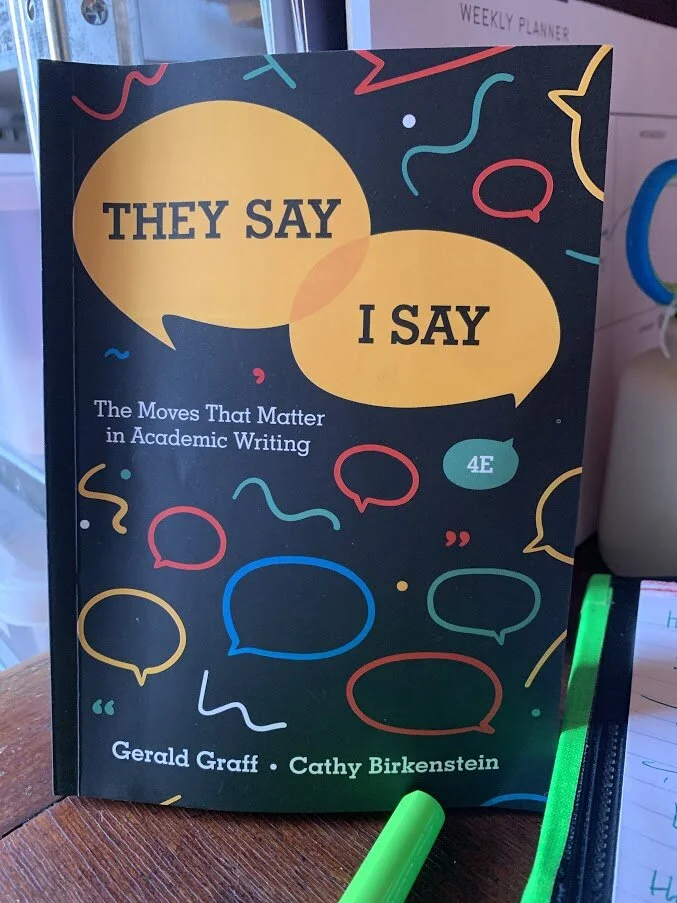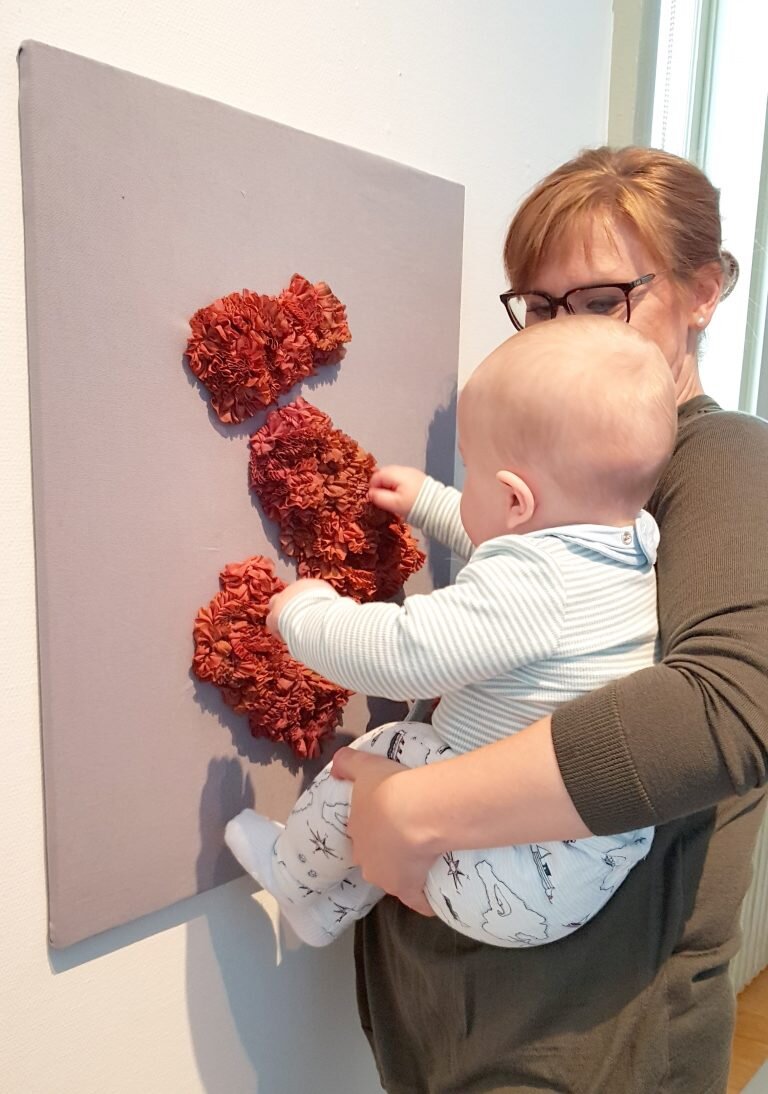7 Years in 17 Works #4 - Sounding Stories
#4 Sounding Stories
Sounding Stories was developed as a follow up to In Touch at ArtSpace supported by Arts in Maroondah. This time the council had a community in mind that they wanted to engage with through workshops leading to an interactive exhibition in the ArtSpace. A large number of refugees from Burma live in Maroondah and the council wanted to engage with young people from this community during the school holiday period.
The council set up initial meetings with elders of these communities from Burma living in Maroondah to discuss working with their young people. We were informed of some of the experiences they have had getting out of Burma and time in refugee camps before arriving in Australia. Some participants would have lived in Australia for years and some had recently arrived from camps in Malaysia.
Maroondah has the second highest number of refugees from Burma settling in Victoria. Most of Maroondah’s settlers from Burma are ethnic Karen from the Thai border area, and Chin, from the area bordering Bangladesh and India. Many would have lived in refugee camps for 10 or more years before coming to Australia. - Refugee Council of Australia
I worked with visual artist and educator Edwina Atkins to develop a workshop that would explore character and narrative. Edie is a great communicator of ideas and an amazing facilitator that really connects with children and brings out their creativity. The workshops were open ended and exploratory in nature as we wanted the themes of the final installation to come directly from the participants rather than coming from us. This would be a process that we would continue to develop further in future works.
This kind of creative development requires a lot of brainstorming and open ended discussions. I think about it like Alice following the white rabbit, you don't know what is around the corner, you’re just following the creative ‘rabbit’. Over several workshops we explored imaginary characters and worlds dreamed up by the young participants. On the final day we recorded each participant recounting their version of the story that had emerged from our explorations.
The Sounding Stories Workshop
Now that we had some amazing drawings and voice recordings Edwina and I went away to put it all together into an interactive installation. The concept of a ‘walk in story book’ emerged from the review of the artwork and audio. Distinct thematic worlds emerged too, The land of the giant character ‘spikador’, the land of strange animals and creatures, the ocean with pirates and mermaids, and outer space.
I wanted to continue exploring the implementation of conductive paint with all the lessons learned from the In Touch installation. We used the paint on panels that would then be connected by wires to the touch sensors. This created a much more reliable connection and allowed us to do all of the application of the conductive paint off site.
Using a projector and a constantly moving ladder Edwina painstakingly recreated the kids’ drawings on the walls of the gallery. Cayn and I installed the speakers and touch sensors, testing as we went. Cyan had produced hundreds of individual sound clips from the children’s voices as well as thematic scores that accompanied each gallery wall. Finally we worked with venue staff to light the installation using colour and texture to accentuate the immersive nature of the work.
The completed Sounding Stories exhibition
The end result was an installation that was both grand in scale and intimately detailed with a myriad of interaction possibilities. The installation opened during a mini festival showcasing communities from Burma with traditional dress, dance and music. The feedback from the community was overwhelmingly positive and continued to have a strong engagement from the general public over the next month.
Whilst being a creative success this work took a long time and it was more expensive than we had anticipated. We were consciously spending more money than we were getting for a project with the assumption that we would keep doing more work like this. We were using these early works to experiment and build up physical infrastructure (speakers, tech equipment etc.) to re-use in future work.
A participant interacting with the installation
Sounding Stories was a springboard that we used to pitch new collaborative community works. It created a framework for future works and helped inform our mission to encourage creative agency. We also established our very tactile form of interactive art and showed it was an effective way to connect people (literally and figuratively) to cultural spaces.
Sounding Stories will change and develop over time, shifting with the input of new communities that guide it to its next exhibition.
Creative team: Paintings by Edwina Atkins, Composer Cayn Borthwick, Tech Wizardry by Matt Blair, Pikkle Henning & Andrew Noble.
Sounding Stories is part of our ‘Collaborate and Activate’ repertoire and you can see / read more about it here
If you are interested in presenting Sounding Stories, collaborating with us or just want to say hi drop us a line: hello@playablestreets.com
If you would like to keep up to date with Playable Streets join our Mailing List
Thanks for reading 🤙
-Glen
7 Years in 17 Works #3 - Reach Out Sounds
Hi, Glen here, this will be an ongoing blog series reflecting on the last 7 years of Playable Streets by exploring the 17 new works we have created so far.
#3 REACH OUT SOUNDS
The Reach Out Sounds journey began with Polyglot Theatre, the Naarm (Melbourne) arts company known internationally for its groundbreaking immersive works created for and with children. I started working for Polyglot in 2010 as a performer, musician and collaborator and in 2015 I was on tour as live musician/ sound designer for their immersive theatrical work Paper Planet. I was nervous and excited, 5 weeks of dates across the US culminating in a week of shows at the New Victory theatre, 42nd Street NYC. My early experiments with interactive technologies (with help from Pikkle Henning, Andrew Callaghan and Cayn Borthwick) had led to a kit that would turn conductive materials into MIDI triggers controlling software instruments. Now I could turn a watermelon into a guitar or a piece of copper into a synthersizer!
My ‘sound nest’ created for Polyglot’s Paper Planet, Philadelphia, 2015
With this new kit as part of my live music setup I could invite kids to interact and create the music in the theatre themselves. I created a series of copper leaves that adorned my sound desk (pictured) that could be played and heard throughout the forest of cardboard trees. Participants had to touch a copper hand on the side and then touch a leaf to activate the music. I would pop up from my desk and guide people through it and sometimes we would play music together, me on the Ableton Push (midi controller/ instrument) and kids on the copper leaves.
During one of the shows a girl about 4 or 5 called her dad over to help as she was having trouble reaching the copper hand that would activate the sounds. He obliged and they held hands to play the leaves, in that moment the experiment completely shifted. This device could allow people to play each other! I suggested dad should keep his hand where it was and her daughter should touch a leaf and then make a sound by touching her dads hand… Ta-daaaaa! She went on to play music on her dads nose, ears and forehead!
“When working with new technology we have these 2 questions in mind: what could this do & what could others do with it?”
That experience had planted the seed for what would become Reach Out Sounds, I spent the next year with the idea bouncing around in my head before applying to Merri-Bek council’s public art program for Melbourne Fringe. I now had 5 grand and a deadline, the starting place for most early Playable Streets works…
The Idea was to create a series of ‘pods’ that had sound triggers on the top, they could only be activated by 2 or more people connecting between them. Cayn Borthwick provided the sounds and coder friends, Pikkle Henning and Matt Blair worked on the tech. We had jumped into the world of Raspberry Pi computers - with very little idea of what we were jumping into! As we got the system (mostly) working I dreamed about what the installation would look like. Although I had built theatre sets and random things like a crumpet gun I was no expert on the manufacturing process for something like this. I called a few places and emailed my plans, I worked out quickly that this 5k budget was not going to accommodate specialised fabrication!
Matt Blair and Pikkle Henning discuss the coding of the Raspberry Pis with the new ‘pods’ waiting to be wired up.
So I measured up the speakers we were using and headed to Northcote Plaza to try my luck there. I wanted these pods to be durable, fit the speaker and other components and most of all be very cheap. The Reject Shop had just the thing, a round white bin! Yep a garbage bin, with a lid, $24, sorted. Top that with a bamboo platter from KMart and you have yourself a bunch of ‘pods’.
We were making, testing, breaking, swearing, fixing and high fiving well into the night before the install. It was all worth it as we had our first participants join us in Victoria St Mall and get straight into making some music! Folks were really into the idea and came back repeatedly to explore more. Some people recruited passers by to link together and reach a pod that was too far away. Others made a chain of people that crossed the whole lane. The concept worked, now it was time to have a play!
Connect to make music! Melbourne Music Week 2016
Over the next couple of years we presented Reach Out Sounds in a variety of venues from an outdoor children’s festival for Melbourne Music Week to the foyer of the Sydney Opera House. We were also exploring new sounds and interaction modes that would take the installation to the next level. Unfortunately 2020 happened and all of a sudden I didn’t see much hope for Reach Out Sounds to ever be presented again. Strangers touching each other in public? Ferrrgeddaboutit! But I couldn’t forget about it, it was bouncing around in my head even more now, especially reading articles about ‘skin hunger’ and how important interpersonal connection is to our species!
The success of Reach Out Sounds motivated me to start a PhD at Deakin exploring ways that we can use technology and music to break down social barriers and make ‘norm~bending connections’. This work is a good example of a rule that has come to define a lot of Playable Streets’ use of technology. When working with new technology we have these 2 questions in mind: what could this do & what could others do with it? We look forward to seeing what others do with Reach Out Sounds in the future!
Reach Out Sounds Victoria St Mall 2015
Speaking of, we think it is almost time for Reach Out Sounds to come out of retirement and get back out on the streets! Watch this space…
Reach Out Sounds is part of our ‘Pop Up and Play’ repertoire and you can see / read more about it here
If you are interested in presenting Reach Out Sounds, collaborating with us or just want to say hi drop us a line: hello@playablestreets.com
If you would like to keep up to date with Playable Streets join our Mailing List
Thanks for reading 🤙
-Glen
PSPS (Playable Streets Post Script)
Note on the physical design of Reach Out Sounds: As mentioned above the original Reach Out Sounds design was created from some cheap Reject Shop bins and Kmart bamboo platters. This is probably not how we would make something today but I learnt a valuable lesson here. Sometimes design is the experience and sometimes design needs to get out of the way of the experience. The whole reason for Reach Out Sounds to exist is to get people playing with each other not with a ‘pod’. As the design progressed we explored how we could make the pods LESS interesting so that all the focus would be on the interpersonal connections between people.
7 Years in 17 Works #2 - In Touch
Hi, Glen here, this will be an ongoing blog series reflecting on the last 7 years of Playable Streets by exploring the 17 new works we have created so far.
#2 - In Touch
Conductive paint! That is where the In Touch (and later Sounding Stories) journey began. I didn’t know how we were going to use it but I knew I wanted to experiment with this relatively new material (Specifically, the non-toxic kind created by London based company Bare Conductive).
I discussed this experimentation with the programmers for ArtSpace in Ringwood, run by Maroondah Council. They thought it would fit with a program they ran which developed new work from artists of different disciplines. We would present the work as an exploration of this interactive medium and run a series of workshops in the space to develop the idea with a range of participants.
Glen’s drawing of a ninja turtle circa 2023 (still got it?)
I am not a painter - I did get pretty good at drawing ninja turtles in primary school but that is still close to the limit of my figurative (art) capabilities. Luckily at the time I lived with an amazing artist, Edwina (Edie) Atkins who went out onto the streets of Ringwood to create a series of portraits that we would present on the gallery walls and activate with sound. Composer Cayn Borthwick developed sounds that ranged from pitched notes to atmospheric soundscapes. Pikkle Henning developed the ‘brain boxes’ as we were calling them, consisting of arduino controllers, capacitive touch sensors and breakout wires that would connect to the conductive paint.
People interacting with Edie’s paintings, In Touch, Ringwood 2016.
This was our first ever ‘gallery’ installation as this newly formed company/ collective Playable Streets. Luckily this program at ArtSpace was all about experimentation and public engagement as we were about to be schooled in a few different ways. Using this medium of conductive paint for the first time was a challenge, large sections of paint wouldn’t work and using the paint as ‘wires’ to travel long distances was also a no go. We were also starting to learn about the elusive nature of capacitive touch sensing and the importance of software calibration, environmental factors and the appeasement of mystical computer gremlins.
Your DNA arts group in the In Touch exhibition
Edie and I ran a series of workshops in the space with a wide range of participants, pre and primary school groups, a group from your DNA (an all abilities arts group from Ringwood) and people from a local Chinese community group of people living with dementia. Each workshop was vastly different and largely participant led. I was lucky to have been working for Polyglot Theatre for several years at that time, presenting many workshops with the amazing Sue Giles (still a huge influence and mentor). Sue gave me the skills and confidence to drop myself into a room of people and ride the participant led workshop rollercoaster!
It was impossible to recognise the significance of these workshops at the time but they became the seeds for several new works that would be led by co-design and participation (Specifically future works that would be developed at ArtSpace over the next 4 years - Sounding Stories, Islands & TiM).
The exhibition was a success as it drew people into this new cultural space to explore art with their hands! This was evidenced by the smudges of black conductive paint all over the walls (interaction trails I like to call them!). Evidently it’s good to use a strong fixative over the paint if you’re not after that effect! It was so important to have a space (and funds!) supplied by Arts in Maroondah to experiment, fail and succeed in equal measure.
In Touch is now part of our ‘Collaborate and Activate’ repertoire and will feature more community collaboration in future seasons of the work.
You can see / read more about In Touch here
If you are interested in presenting In Touch, collaborating with us or just want to say hi drop us a line: hello@playablestreets.com
If you would like to keep up to date with Playable Streets join our Mailing List
7 Years in 17 works - #1 - The Plants
Hi, Glen here, This will be an ongoing blog series reflecting on the last 7 years of Playable Streets by exploring the 17 new works that we have created so far.
#1 The Plants
In 2015 I was obsessed with videos of people playing bananas like a piano. ‘What is this surreal and ridiculous alchemy?’ I must try it for myself! I bought an arduino and an extra sensor that would allow me to connect anything conductive to trigger sounds on a computer. I was hooked on this idea that anything could become a musical instrument. As someone who has played instruments (guitar, bass) most of my life I knew how fun they could be, but also how frustrating and rigid. I was constantly tinkering with guitars - changing how i strung them, plugging them into the video input of tvs or adding other sound making elements to them (none of these tricks helped me play any better btw😉).
“There is something about creating dynamic sound with purely organic interactions that is unexpected and exciting.”
A mate from Bristol, Daniel Clark (fantastic musician and voice!) was in Melbourne and we were riffing on the idea that this technology could make the world more playable, you could make a street playable! This idea stuck in my head like a bindi in a beach towl - that was the seed for Playable Streets.
I had a look online and found the Test Sites program was funding public art experiments so I put in an application, secured the funding and now had to make the thing, eek! Pikkle Henning came to the rescue with his engineering skills and we managed to put together some devices that in theory could turn some street infrastructure into musical instruments. I say in theory because the big day came and we had everything ready to go, it all worked at home so surely it would work out on Swanston Street? It did not.
We put everything together, running so much wire all over the place, copper spaghetti. But then nothing! Or, bits of something but not when it was supposed to happen. Pikkle and I ran around trying to get it working - to no avail. We set up three plants in tin buckets that we knew would work (triggering orchestral music when touched) while we tinkered and rubbed our eyes.
Participants playing ‘The Plants’ on Swanston St in Melbourne (2015)
As we stressed about the other things that we had wired up (to make the street playable!) we kept hearing the orchestral plants chiming away and passers by both interacting with them and watching others interact. People were actually jamming, playing, collaborating, laughing, and taking photos.
Pikkle and I stopped worrying about the other stuff and began to engage with participants instead, fielding questions on how it worked and playing along on The Plants.
This Test Sites showing was the beginning of The Plants and Playable Streets. This work also led to our relationship with ArtSpace Ringwood where we developed In Touch, Sounding Stories, Touchable Sounds and Islands.
The next step was to see what these plants could really do, for that we were off to the Abbotsford Convent!
Long time friend and musical collaborator Cayn Borthwick and I locked ourselves in a small room in the Convent with the goal of turning those 3 plants into a musical instrument. The sonic possibilities were endless and we experimented with hundreds of combinations. In the end we landed on 12 plants playing piano in the harmonic scale, a synthesizer and nature sounds (birds etc). Our focus was on creating sounds that could be played either simultaneously or individually by participants without creating too much of a cacophony.
Participants playing The Plants Abbotsford Convent (2017)
We presented the 12 plants on the grounds of the Abbotsford convent over a weekend and made many discoveries (outlined in my Masters Thesis).
The most important discovery was that folks seemed to love playing plants! There is something about creating dynamic sound with purely organic interactions that is unexpected and exciting.
We presented The Plants in this format at MPavillion (City) and were commissioned to create a new version of The Plants for MPavillion Monash. With our observations in hand we went about re designing the housing for the plants and the sounds that they triggered. We also developed a workshop that asked participants to create unique musical notation for these unique musical instruments.
The Plants & The Person at Melbourne Music Week (2109)
Over the next 3 years The Plants travelled to Penrith, Canberra and across regional Victoria, every season delivering new insights and advances. In 2019 we presented The Plants ELECTROGROW as part of SWELL 5.0 at Melbourne Music Week. Working with some of our favourite local independent electronic artists (The Person, Cayn Borthwick, Bribery) we developed a system that would allow participants to interact directly with the artists’ musical performance. The audience became participant, collaborator and improvisor. It was exciting to experience this party of electronic music and energetic plant playing! More please!
The future of The Plants will focus on more this kind of collaboration, with participants and musicians coming together and making some beautiful music together.
You can see / read more about The Plants here.
If you are interested in presenting The Plants, collaborating with us or just want to say hi drop us a line: hello@playablestreets.com
If you would like to keep up to date with Playable Streets join our Mailing List
Goodbye 25A 👋
After 18 years at 25A Eastment St Northcote it’s time to say goodbye. It has been a great place of creation and community over the years, many amazing folks have been up and down those stairs, and it has served as headquarters for The Suitcase Royale, Mighty Duke and the Lords and Playable Streets.
Here are a selection of pics of fun times! Do you have a photo or a story from 25A? Post it and tag @playablestreets or email it to hello@playablestreets.com
Bye bye 25A! 👋
Interactive Websites
PLAYABLEWEB.COM is our very own interactive website where we are experimenting with art created by kids!
There are heaps of other playful interactive websites out there, here are a few (click on the screenshot to go to the site), please let us know if you’ve seen a great interactive website out there!
Cat Bounce
Bounce a cat or two!
The Relationship is the Project
The Relationship is the Project Book Report
This is THE handbook for creating work with communities, a must-read for anyone working in this space. It is also just full of great writers that exemplify Australia’s socially engaged practice and offer a vision of how creative practice could and should be led.
CHAPTER 1 - First Peoples First
This is the first chapter of a book I have been excited to read for a long time.
This chapter was laid out simply ways that a First People’s ally can start to think about how to work in community without being patronising or paternalistic.
“Things to keep in mind"
Know yourself and your culture. What beliefs/practices are you bringing into this work? Understand your own culture and cultural practice. If applicable, recognise your white privilege and how your whiteness operates internally and externally.
Understand the unique history and culture of place. Each First Peoples community is different. Spend time learning and understanding the local context.
Work yourself out of a job. Create opportunities to strengthen and support local mob to take over your position.
Don't think you know best. Communities have the answers to their own problems.
Learn from the past. Listen and learn about what has gone before. Support community aspirations and existing projects rather than reinventing the wheel.
Do not speak for First Peoples. Always know your place as a supporter and an ally, not as a leader in the space.
Make a long-term commitment. The longer you work with a community, the greater your understanding and the more effective you will be.
Take time to build trust. Communities have experienced many workers come and go, with a range of positive and negative experiences. There have also been many disappointments due to broken promises and policy failures. Take the time you need to prove your worth.
CHAPTER 2 - Intersectionality
Kimberlé Williams Crenshaw
This chapter by Alia Gabres takes the term ‘intersectionality’ coined by Black Feminist writer Kimberlé Williams Crenshaw and relates it to arts practice and institutions.
It shows how some identities are marginalised
This includes those not thought of as ’mythically normal’
Identities can overlap to multiply discriminations (ie being disabled and black)
Self-awareness of privilege is a recurring theme so far in this book.
Dr. Lilla Watson
Ends with a great quote from Aboriginal Artist and Activist Dr Lilla Watson:
If you have come here to help me, you are wasting your time. But if you have come because your liberation is bound up with mine, let us work together
Chapter 3 - The Art of Collaboration
Like the title of the book declares The Relationship is the Project and this chapter outlines how collaboration is a kind of relationship. As in any good relationship three factors are key: Trust (ethical behaviour by all parties), language (how we talk about each other in the collaboration) and time (time is the key for establishing the other two factors, it is also often undervalued).
In this chapter Eleanor Jackson discusses the importance of being vulnerable and letting go of control, acknowledging power imbalances and being honest about yourself and your collaborators.
Chapter 4 - Ethics and Self-Determination
This Chapter by Tania Cañas describes the difference between Self-expression and Self-determination, and how it relates to collaborations between communities and artists.
the ever-continuing struggle to seize back their creative initiative in history through a real control of all the means of communal self-definition in time and space
- Ngũgi wa Thiong
This chapter made me think of the topic of black tokenism brought up briefly by the character playing Margaret Sloan-Hunter in the tv show Mrs. America. It is not enough to represent community using the privilege that we enjoy. We must strive to develop the opportunity for self-determination and true autonomy.
Chapter 5 - Access and Inclusion
I was lucky enough to be part of a workshop that Caroline Bowditch held for Polyglot Artists at the Abbotsford Convent in February this year. It was a great experience and it was equally great to read this chapter on access and inclusion in the arts.
Caroline outlines Social Model thinking that recognises people are disabled by barriers that society creates not by their condition or impairment.
Dissability results from an interaction between a non-inclusive society and an individual.
-United Nations
A remedy for the injustice that is disregard for the needs of a great number of the population may be found in universal design principles.
Ron Mace
Universal design is the design of products and environments to be usable by all people, to the greatest extent possible, without the need for adaptation or specialised design.
- Ron Mace
More about universal design can be found here: Centre for Universal Design Australia
Chapter 6 - Creating Communities
Chapter 7 - Creatively and Culturally Safe Spaces
Lia Pa’apa’a
Chapter 8 - Platforming for Community: Going beyond surface representation
Adolfo Aranjuez
Chapter 8 - Cultural Safety: An overview
Ruth De Souza and Robyn Higgins
This chapter gives an overview of cultural safety and how it can apply to arts institutions and arts practice. The practice of cultural safety education comes from advocacy by Māori nurses. It was taken up by the New Zealand nurses association and asks people to examine their inherent cultural biases and how they might affect their practice.
This chapter also highlights the Australia Council statistics that highlight the inequity in the Australian Arts industry. The principles of cultural safety include critical self-reflection, engaged communication, minimising power imbalances and decolonising practice. Through a lifelong commitment to these principles, we can get onto the road of a more equitable arts landscape.
Working from Home
So many small boxes filled with electronic components, a giant Koala costume, a double bass. It is strange how my office is becoming a museum of things I used to use... Since lock down my days have been spent on a computer with my past life looming behind me. I hope that one day soon I can be playing music on stage again, or making interactive installations for public spaces or working in aged care centres and schools.
Interpersonal Touch Musical Interfaces
Collecting some of the experiments in the field of interpersonal touch based musical interfaces.
Sound and Cardboard
Working with motors, string, paper and cardboard Swiss artist Zimoun makes amazing installations that dramatically change spaces both sonically and visually.
www.zimoun.net
The Minto Cats
The Minto Cats by Katie Reid - A portrait of the Suitcase Royale as cats.
I have been writing notes on the great book The Relationship Is The Project the chapter by Rosie Dennis on creating communities made me feel like the start of the year was so long ago!!!
In February of this year, I was sitting in Dukes Coffee on Flinders lane squeezed in between the classic Melbourne crowd waiting to have a chat with Rosie Dennis. Rosie is the CEO and Artistic Director of Bleached* Festival and was in Melbourne for APAM.
I first met Rosie back in The Suitcase Royale days, we worked on a project with her in Minto, NSW, around 2010 I think. It was a wild week. We were given a cafe in a near-abandoned shopping centre and were tasked with engaging the local community in some way.
We had a bunch of plans that all went out the window as soon as we began to have conversations with people who lived there, they just wanted their cafe back! So we fired up the coffee machine and got into it! I still have two paintings from a local artist called Katie Reid that I cherish. That was a project that really shaped my understanding of creating work in a community that is not your own.
I hope that Rosie and I can hang out and chat in a cafe sometime in the future!
Young and Eager by Katie Reid
Colouring in Kingston
I came across this project today called Colouring in Kingston. It has been created by Kingston School of Arts students Izzi Toovey and Josephine Miller. They are digitally recolouring childrens’ drawings and presenting them on Instagram.
It is especially interesting as I am seeking ways of collaborating with participants in this post COVID world. Playable Streets has created Playable Web as a platform for somewhat similar collaborations. Kidstruments and Exquisite Stories are two works that we are currently presenting based on works that had been developed pre-COVID.
One thing that we have found has been the most tricky part of these collaborations are the instructions! Here are the instructions for Colouring in Kingston. They are clear but quite a large document.
It will be interesting to see how this sort of collaboration evolves and develops in the future.
A picture by 10 year old Josh (right), and the digitally coloured version created as part of Colouring in Kingston.
The images are being used to create posters for Kingston Council to ‘spread messages of health, wellbeing and our environment’
Radiohead 800 X Slower
My mate Steve sent this to me today and I’m obsessed, Radiohead’s already brilliant song is a near 40-minute ambient journey slowed down 800 times.
It also made me think of the Jolene at 33RPM which gives it such an awesome groove!
Any other great examples of slowed down tracks out there?
Playtronica - Touch interfaces and performance
The Russian / French company Playtronica is definitely the most prolific creators of touch-based musical installations. They currently have two devices that they sell that allow anyone to create the kind of work that they put into public spaces (or perform in concert settings).
This blog post will grow over time as I develop a greater understanding of their work and look at examples of their performances and novel uses of their devices (Touch Me and Playtron).
Playtronica at the Pompidou
Playtronica created this performance piece in collaboration with Arte Radio at the Centre Pompidou. It is a re-imagining of György Ligeti’s music and inspired by the Endless Column sculpture b y Constantin Brâncuși in the background.
The passers-by had to, step onto Playtronica-wired floor, and touch the skin of the “columns”. Thus, by spontaneous interaction of strangers, a new interpretation of a famous masterpiece was born.
‘Inclusive’ testing of their installation at the Pompidou
They Say / I Say
PREFACE
They Say / I Say by Gerald Graff and Cathy Birkenstein
Just starting this book and I can see how useful it will be as I begin my writing for this PhD. It Suggests a series of templates can be the way to open up academic writing and show it’s workings (without making it formulaic).
Basically, I have to summarise the “They Say” to set up my argument (“I Say”)
Check out the They Say I Say blog HERE
Some Logical principles of argument not covered in the book (but worth an investigation)
Syllogisms: An argument that arrives at a conclusion based on two or more propositions :
“All men are mortal. Socrates is a man. Therefore, Socrates is mortal.”
Warrants: The reason the evidence supports a claim. Or the reason the evidence is trustworthy and therefore your argument is built on a solid foundation of fact.
Logical Fallacies: Basically this is errors in the facts. They can be spotted due to a lack of evidence or misuse of statistics for example. Just think of Donald Trumps’ use of coronavirus statistics.
Inductive Reasoning: This starts with facts and works it’s way to a conclusion through more of an explorative process. It may be a way to generate a hypothesis from a series of facts rather than using those facts to prove a hypothesis.
Deductive Reasoning: Starts with a theory or hypothesis and works its way towards a conclusion based on evidence. For example, my hypothesis is that technology can be used to create engaging interactive experiences. If I can provide examples and evidence that supports this I can deduce (Mr Watson) that technology indeed can be used to create engaging interactive experiences.
Melton Growth Project Creative Development
Emily Tomlins and I started our creative journey on the ‘Growth Project’ for Melton Council. This is a very large community collaboration project that will culminate in an interactive installation in October 2021.
It was great to start throwing ideas around and talking about the big themes of the project including urban sprawl, community connection and agency.
After a morning of throwing any and every Idea out into the zoom-room, we settled on some questions that we can pose to the participants that will begin the conversation for the project: What do you like about your area now, and what do you imagine it will look like in the future.
We want to keep it as open as possible to allow for the most unprescribed answers and therefore creating the most unexpected results.
We discussed the installation taking on many different forms but ultimately we want the participants to have a say in how it develops.
'Touch': A panel discussion about the use of touch in performance, led by Jane McLean, Ruth Spencer and Laura Blake
A panel discussion about the use of touch in performance, led by Jane McLean, Ruth Spencer and Laura Blake.
I particularly found the work of Laura Blake interesting for my research on touch interaction and accessibility.
Laura Blake:
Visual Artist creating work that can be touched and interacted with.
Co-design is part of her practice, audiences test ideas around works.
Works with neurodiverse audiences.
It’s important they have the experience they want to have with it.
“Objects become a tool for communication between people.”
THE SOCIALLY DISTANCE FUTURE OF TOUCH:
Do we need to think about changing the art materials?
Continue to advocate for touch, don’t forget about it.
Touch language of the supporting adult is very important.
Artwork by Laura Blake
Artwork by Laura Blake
Oily Cart Interview with Joanna Grace
Joanna Grace is an artist, academic and writer creating work and writings about people with profound and multiple learning disabilities.
Some of the issues discussed:
Creating sensory theatre for multiple layers of work for people of all intelects.
Talks about vestibular sense stimulation ie moving through space as a participant.
Peri Hand space is an extra sensory ‘helper’
“Shutting up can be a powerful thing”
Talked about sensory rooms and ways they can be successful or unsuccessfull
Sensory Being for Sensory Beings by Joanna Grace
The album that made me delete all my News apps
Last week was a rough week, I was coping pretty well in this mess of a year up until last week. Like many folks here in Melbourne I think the lockdown is getting to me a bit more than I had been letting on.
Last week was a rough week, I was coping pretty well in this mess of a year up until last week.
Febm - Tape 3
Like many folks here in Melbourne I think the lockdown is getting to me a bit more than I had been letting on. Not seeing family and friends, never really breathing fresh air (we have no outside space and are masked every time we leave the house). And to top it all off I am very closely watching the shipwreck that is unfolding in the United States. I know my interest is outsized, I lived there for a couple of years and still have close friends in Lincoln, Nebraska but really if I follow any news I should be following what’s happening in my own backyard!
I don’t think it is actually the news that I am following, I have no agency, I have no control over what happens in American politics. The reason I follow it is for the show, the drama, the twists and turns. Every day is a new episode of an Orson Welles radio drama (is this real? Surely this isnt real!).
So I say farewell (for now) to the supreme court, the tax returns, the protests and the gun-toting white supremicists. I’m turning off, apps are deleted…
Oh and what was the Album that got me thinking about this? It is the new Album from Netherlandian Felbm. His last two albums (Tape 1 & Tape 2) were fantastic mellow almost ‘elevator lounge’ but somehow not in a daggy way. This new tape (Tape 3) adds real drums and a much bigger sound, there is some real soul in this album but with the same Felbm tone and weirdness.
There is nothing about this album that directly made me want to stop listening to American political news (so no guarantee it will work for you!). I think it is simply that there are no words that can ever be a substitute for good music, so I’ll stop.
-Glen
Interview on State of the Art - PBS
I had the great pleasure to chat to Annika on State of the Art about Playable Streets’ new online platform ‘Playable Web’. We discuss moving from interaction online onto the internet. How does a company that is so focussed on real and tangible touch interactions create work that is still collaborative in spirit?
You can listen to the interview here and go to the PBS website to listen and support their great work!
Inspiration, musings and cool stuff from the world of music, technology, art, design and probably other random stuff!



















